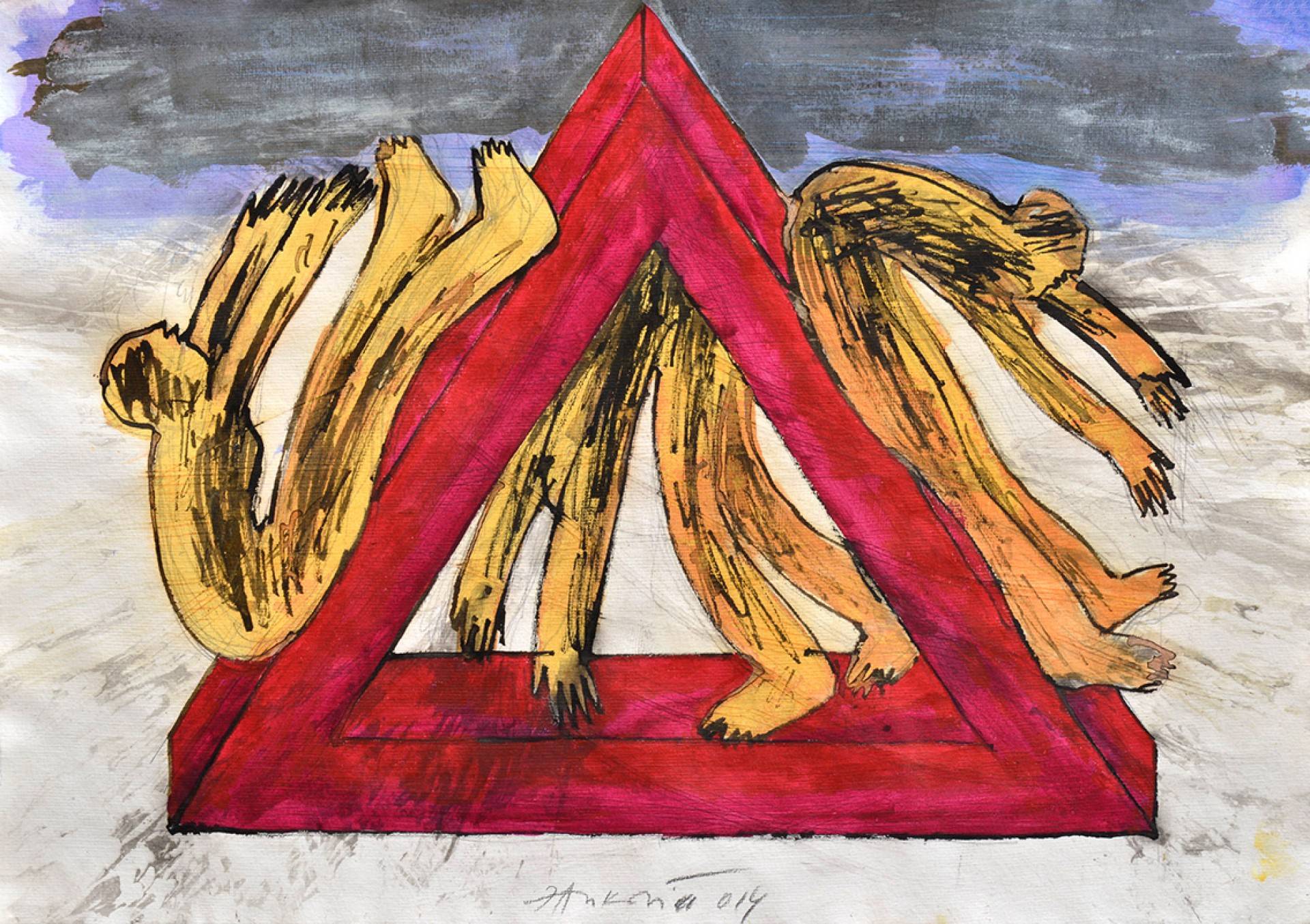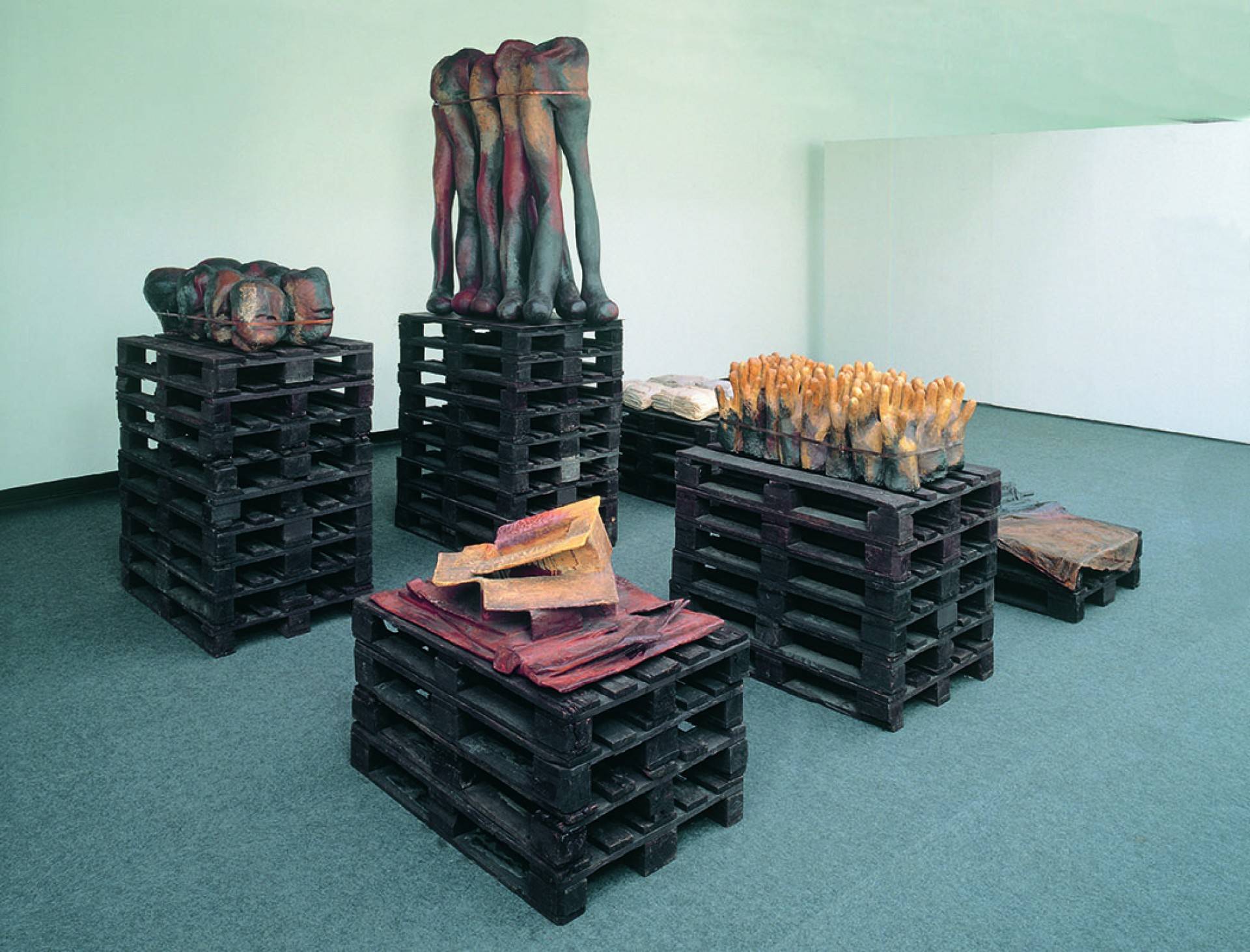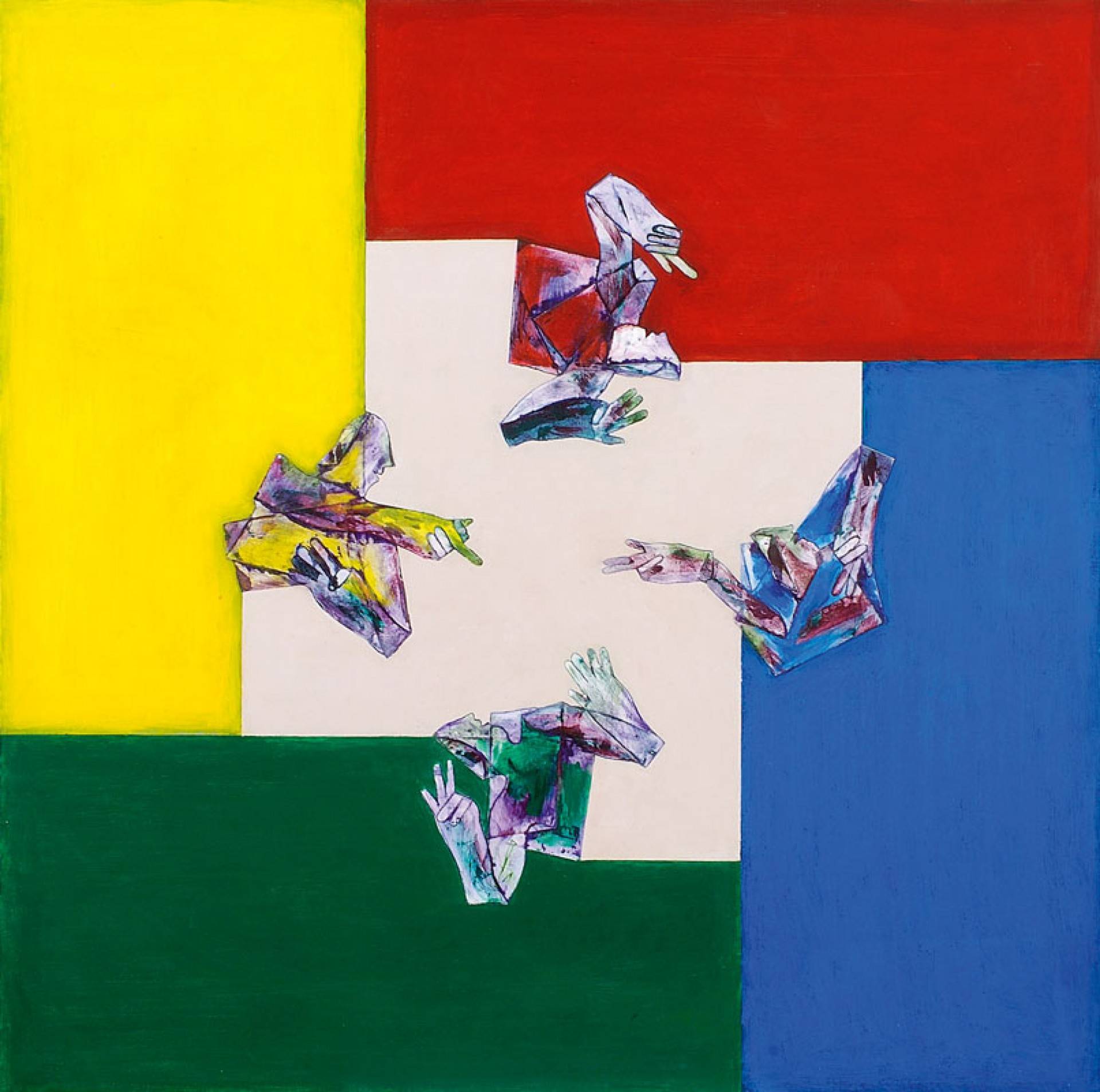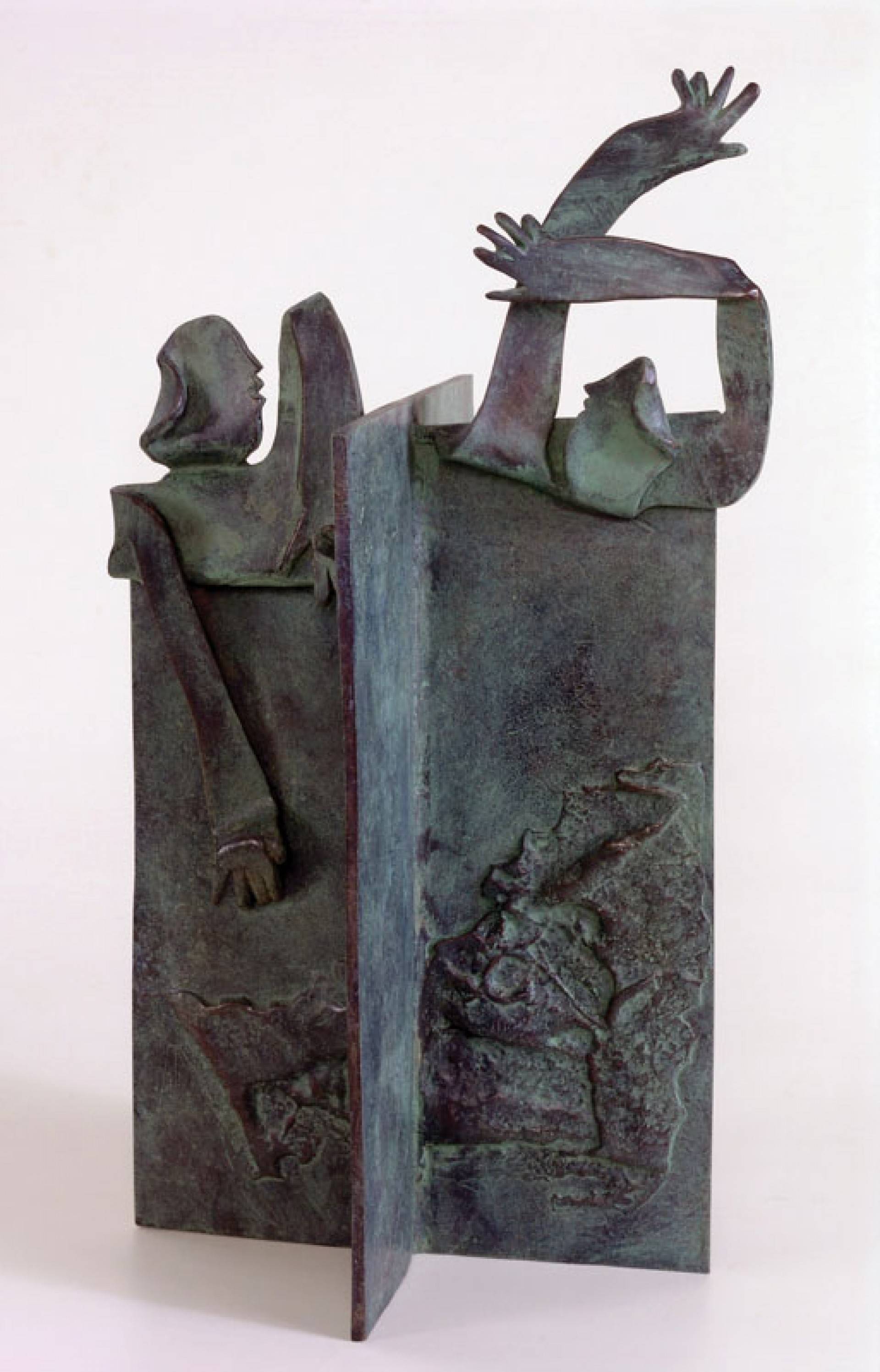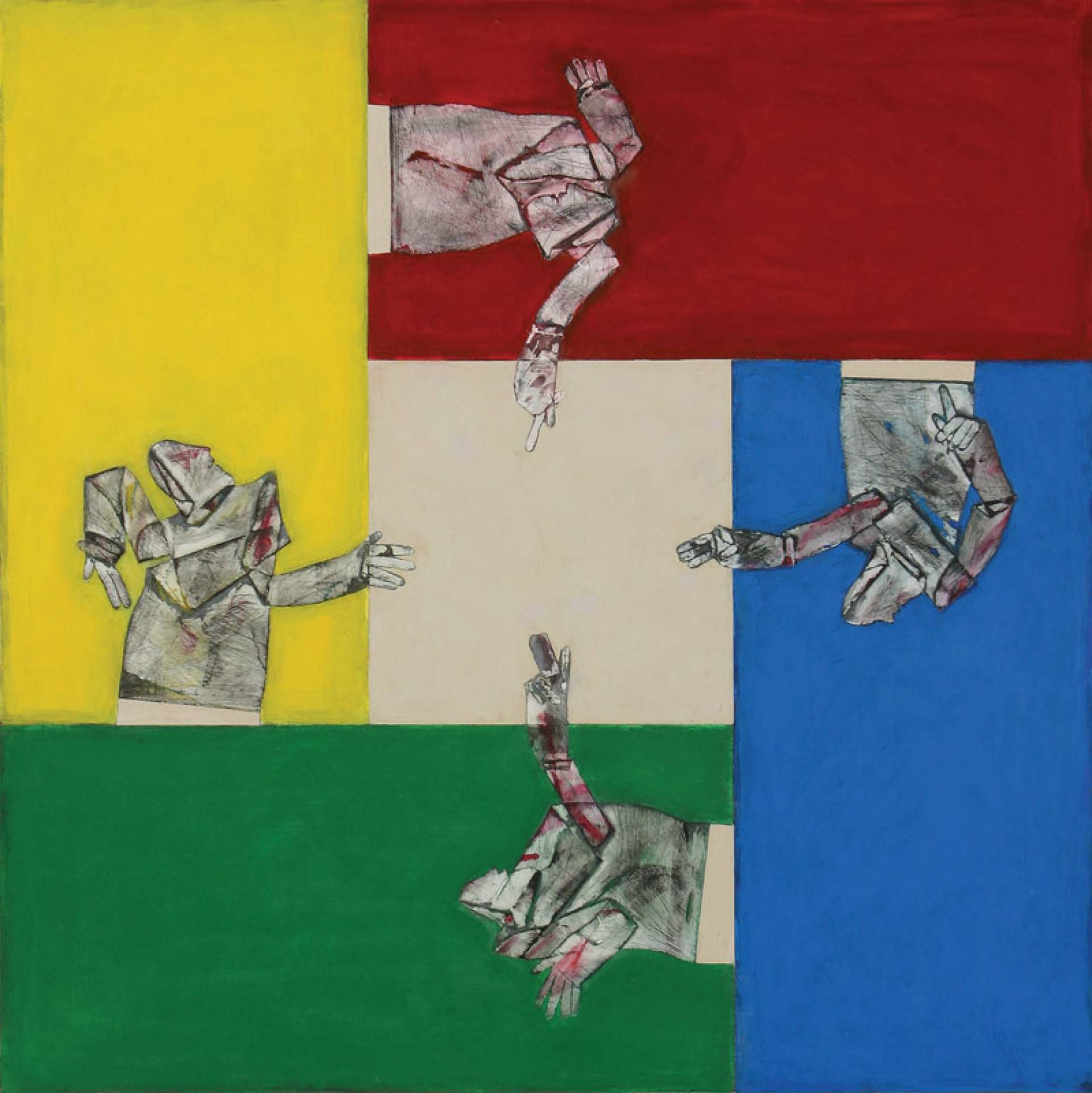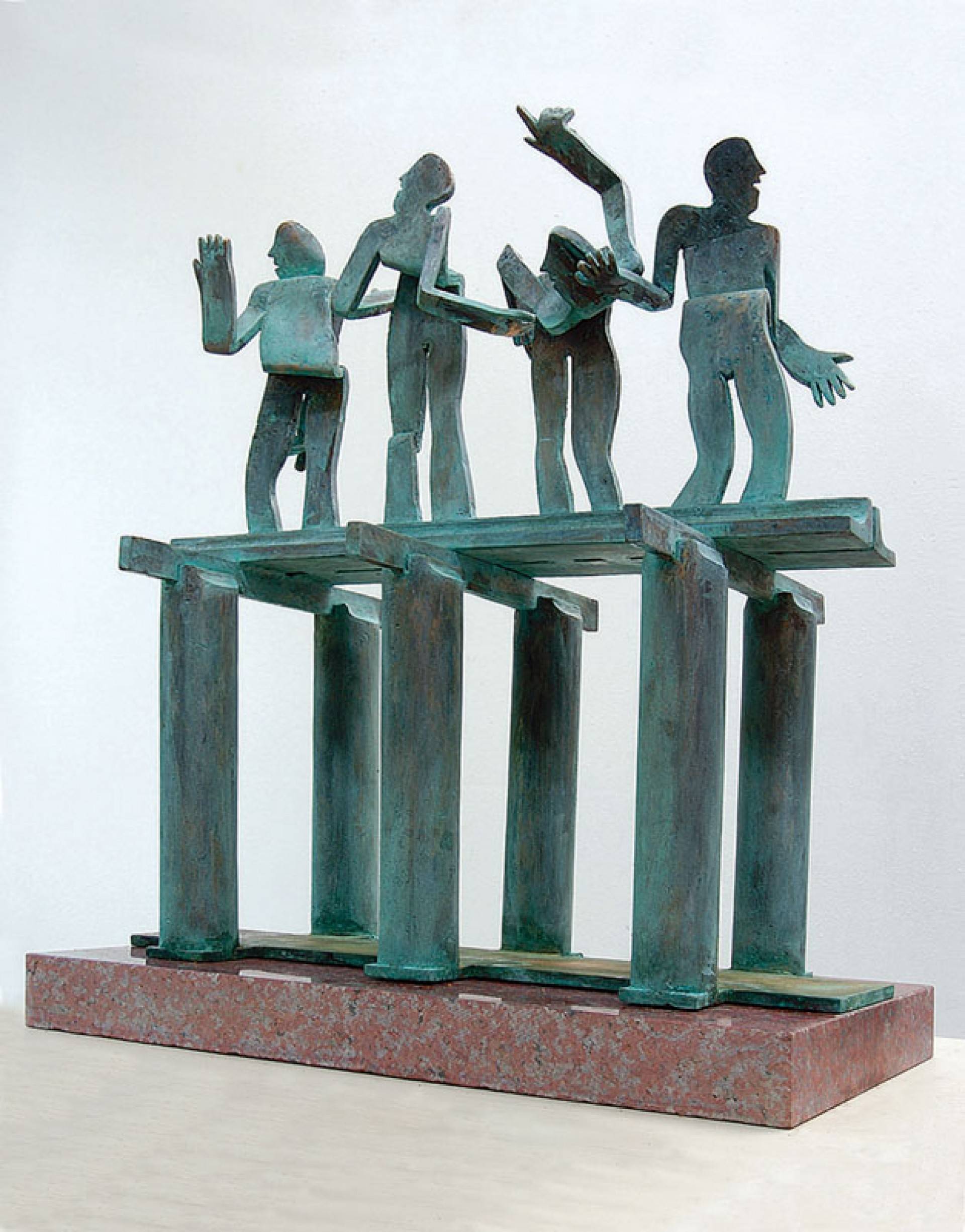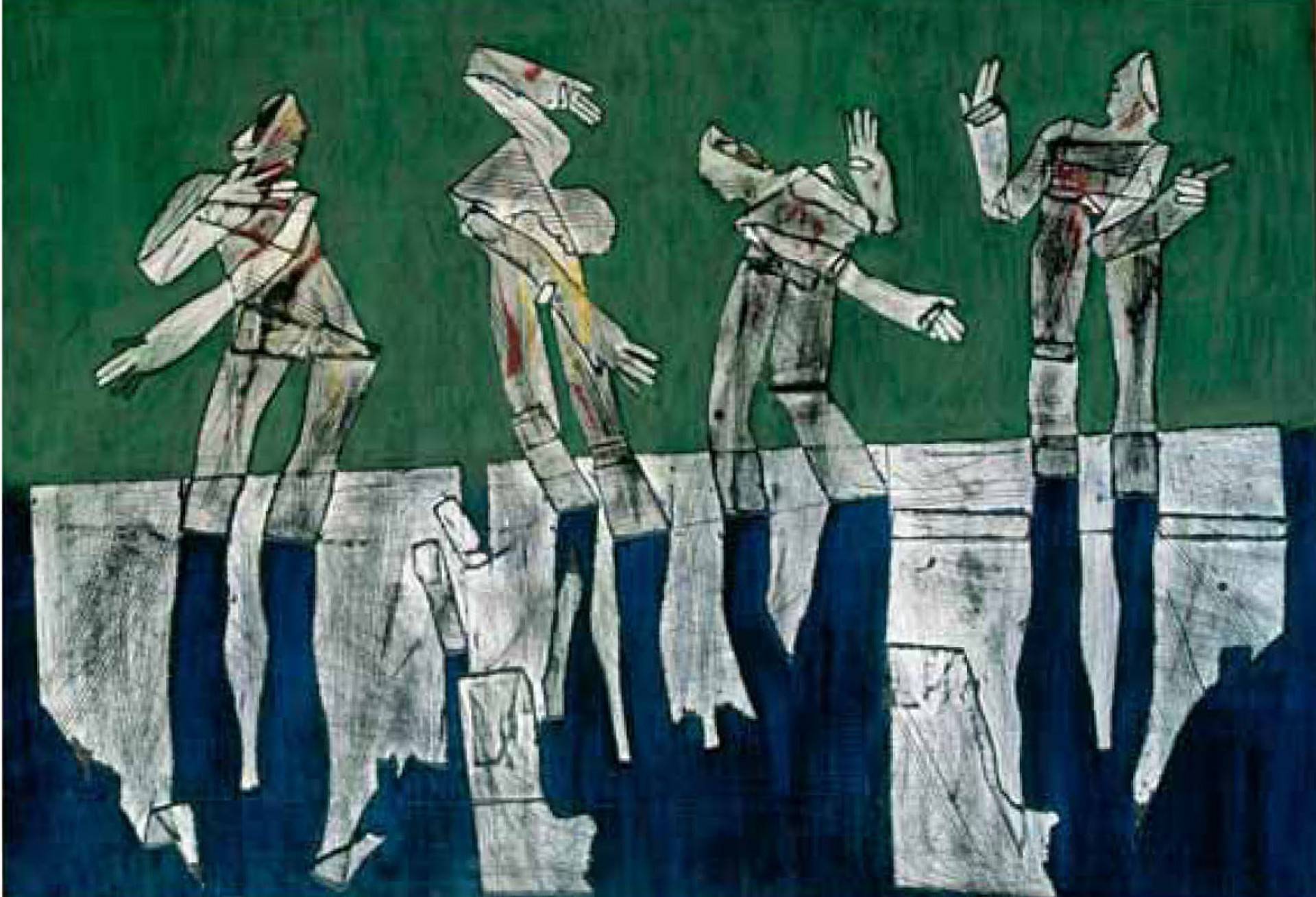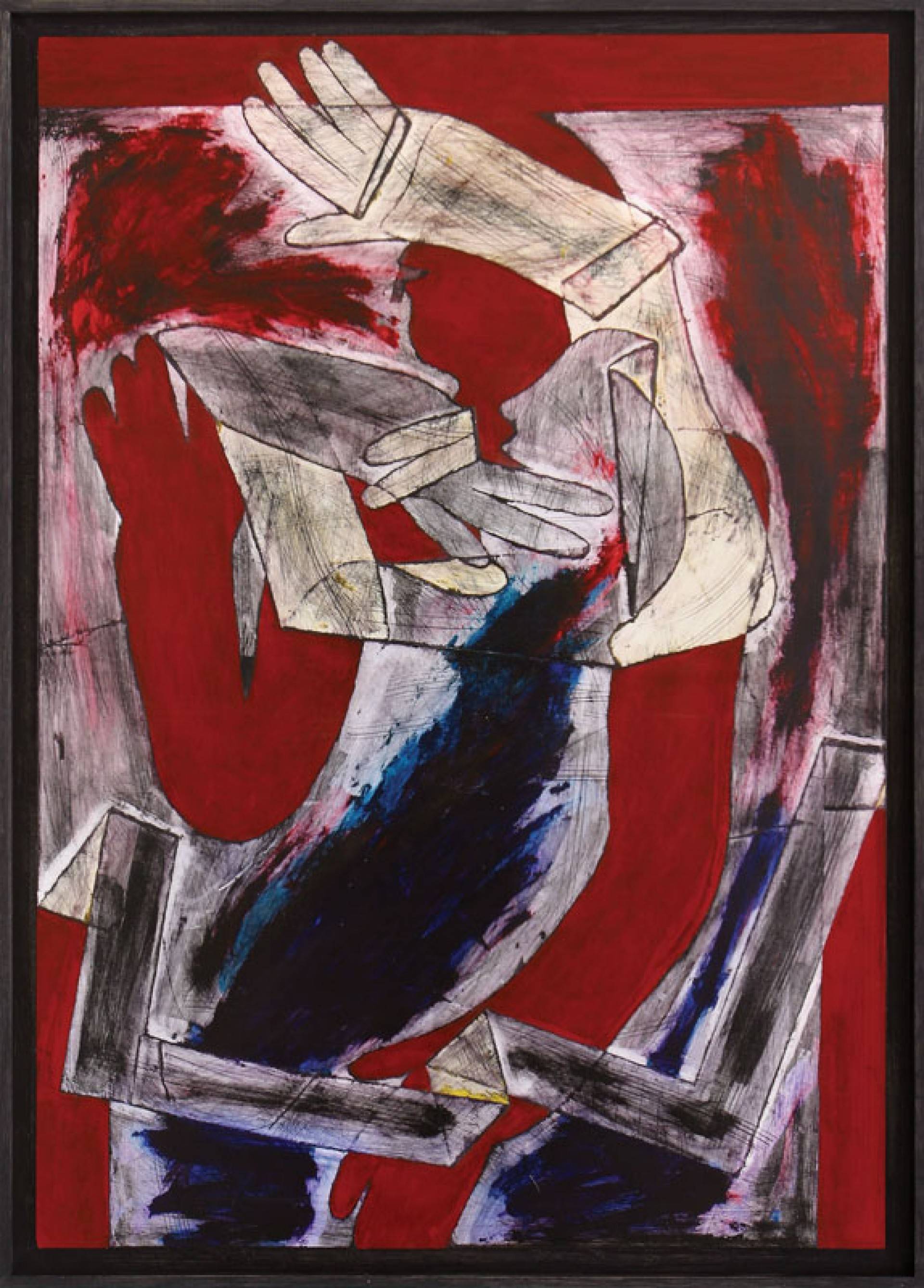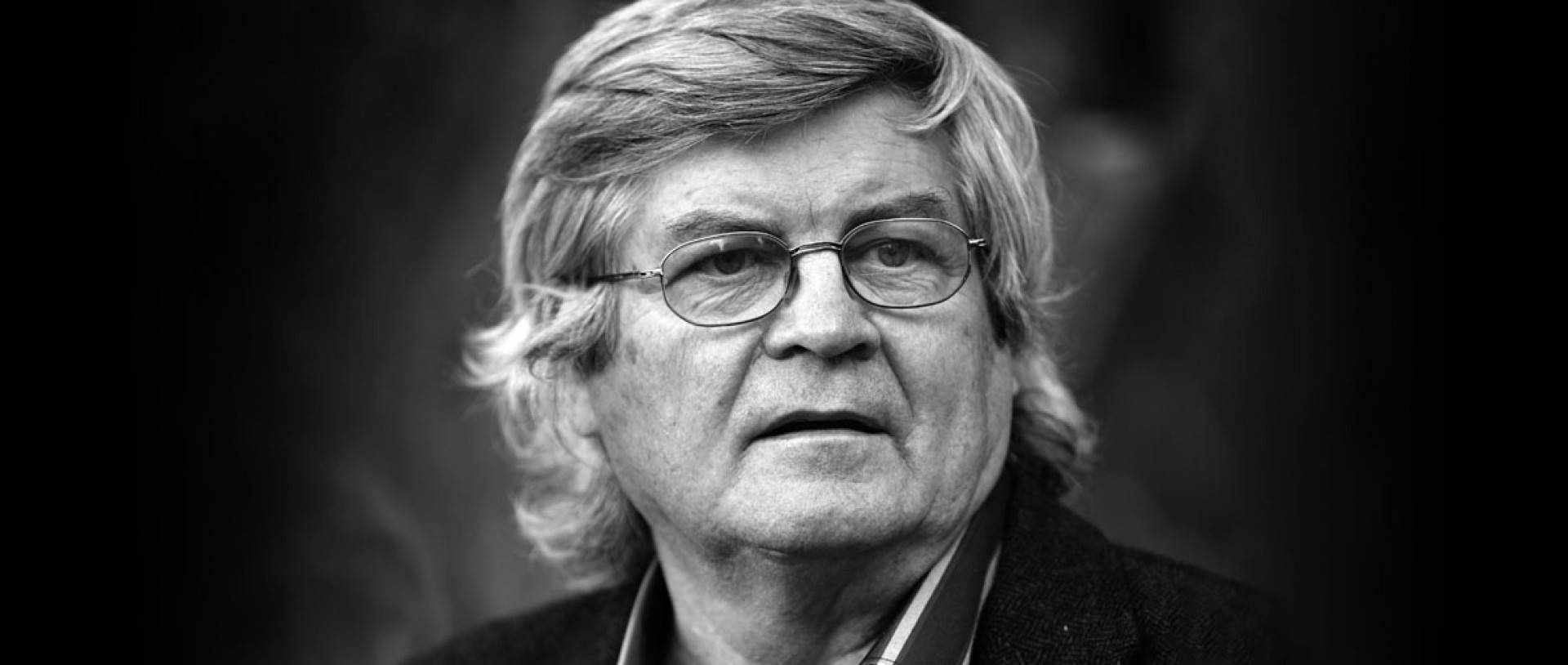

Sculptor Jozef Jankovič was one of the artists and people behind the foundation of Danubiana Meulensteen Art Museum. He fought for the creation, development and continuation of the museum because he claimed that every new site for visual arts was a plus for Slovakia. He held exhibitions here several times (his sculptures from 1985 – 2010 in 2010) and some of his works belong to the permanent exhibition of the museum. By this exhibition in the “heart” of Danubiana, we want to commemorate his exceptional artistic persona. We start our remembrance monothematically before 1989 when he returned to what he loved most – to sculpting – after normalization and a period of involuntary creative isolation. At that time, along with other, nowadays iconic works such as Walking Monument, Ecce Homo and In the Footsteps of Our Fathers (1987), he created a sculpture installation called E.U.R. (1988). A fatefully dark anamnesis of the reality of that time unravels in front of us on pedestals made of interchangeable Euro pallets (E.U.R. was a corporate abbreviation for wooden constructions used to transport goods). We see raw remnants of “semi-finished human products” – heads with mouths plastered with steel foil tape, seemingly impersonal casts of legs and arms, flags, piles of newspapers, boxes, superfluous civilization (and ideological) waste. Monsters known from his figurative, anthropomorphic architectures cycle are transformed into victims, silent anonymous crowd easy to manipulate and trade with, anything can be sold... Ideals, ideas, illusions, disillusions. Jankovič argues with the idea of monumental iconoclasm to which he also fell victim (his sculpture The Victims’ Warning was removed from the Slovak National Uprising Memorial in Banská Bystrica at the beginning of the 70’s and returned only in 2004). The exhibition also shows his drawings from Korean cycle (1988) which were created after he returned from an Olympic symposium in Seoul where he had been allowed to travel by the then regime after years of persecution. There he created one of his most important monumental works, a sculptural group The Place Above (1987). He shows us what can happen with a figure on a pedestal or with a monument, an “ego” worthy of worship, points out the absurd situations that can arise. More than thirty years have passed since the creation of these works and we now have a different historic experience than when they were created. However, interpreting any artwork is an open question and the work itself can gain other, completely unexpected meanings. Jankovič’s sculptures and drawings keep reminding us that there are still many things, situations and phenomena turned upside down and falsely put on a pedestal...
Katarína Bajcurová
JOZEF JANKOVIČ (1937 – 2017) was a leading representative of modern Slovak sculpture. His characteristic brutal figuration was the result of an original synthesis of pop-art, neo-figurative and neo-realistic impulses. His works have gained wide international recognition since the sixties. He studied at the Academy of Fine Arts and Design in Bratislava (1956 – 1962) where he also worked as a teacher, rector (1990 – 1994) and professor (1994 – 2007). His works were on exhibition at Venice Biennale twice (1972, 1995) and he won prestigious awards: Grand Prix from Danuvius biennale in Bratislava (1968), Biennale de Paris (1969), Herder Prize (1983) etc. He created several monumental works situated in architecture and in the environment (Slovak National Uprising Memorial in Banská Bystrica, Kováčová, 1969). He created sculptures in Croatia, Slovenia, Germany, France, South Korea, etc. His works are exhibited in renowned Slovak, Czech and European collections.
